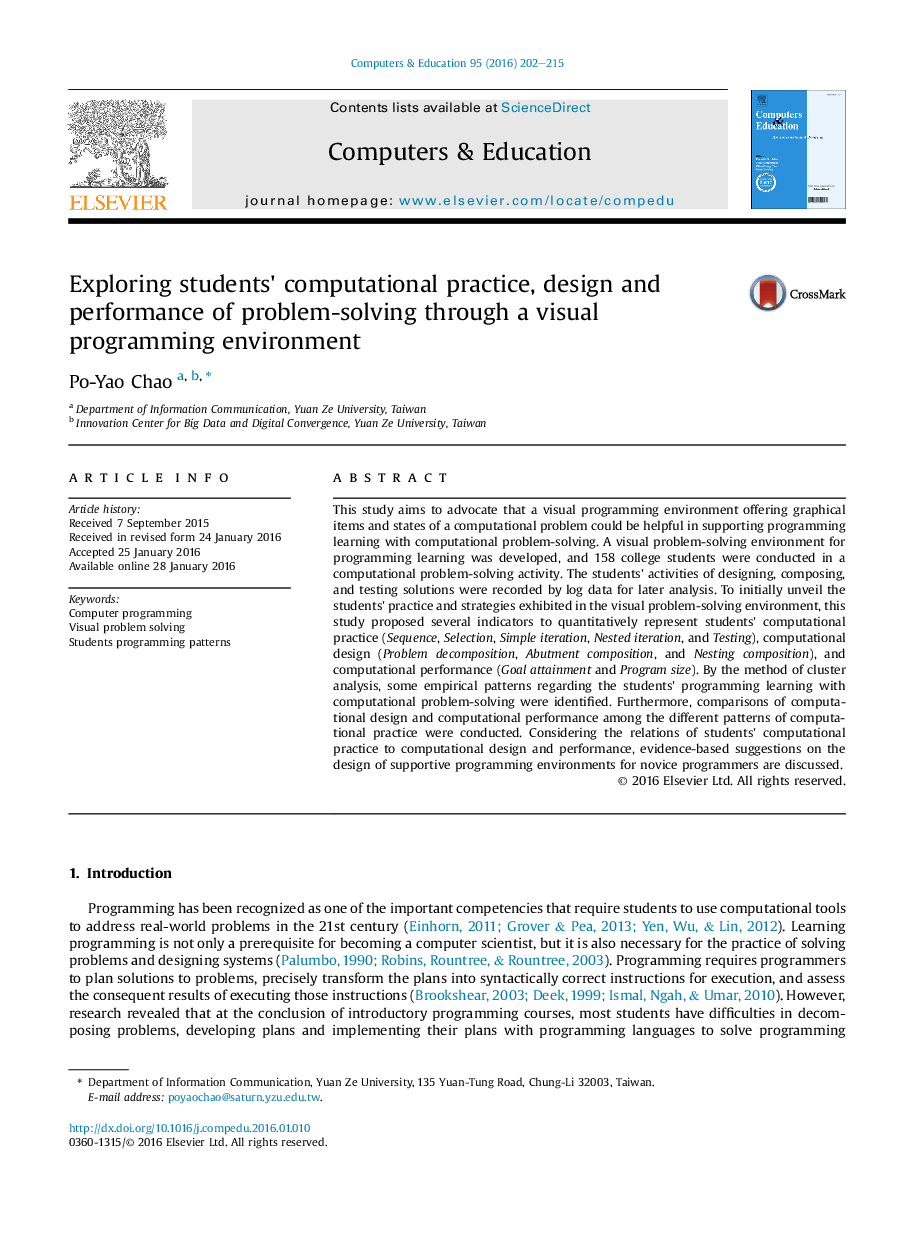| Article ID | Journal | Published Year | Pages | File Type |
|---|---|---|---|---|
| 6834912 | Computers & Education | 2016 | 14 Pages |
Abstract
This study aims to advocate that a visual programming environment offering graphical items and states of a computational problem could be helpful in supporting programming learning with computational problem-solving. A visual problem-solving environment for programming learning was developed, and 158 college students were conducted in a computational problem-solving activity. The students' activities of designing, composing, and testing solutions were recorded by log data for later analysis. To initially unveil the students' practice and strategies exhibited in the visual problem-solving environment, this study proposed several indicators to quantitatively represent students' computational practice (Sequence, Selection, Simple iteration, Nested iteration, and Testing), computational design (Problem decomposition, Abutment composition, and Nesting composition), and computational performance (Goal attainment and Program size). By the method of cluster analysis, some empirical patterns regarding the students' programming learning with computational problem-solving were identified. Furthermore, comparisons of computational design and computational performance among the different patterns of computational practice were conducted. Considering the relations of students' computational practice to computational design and performance, evidence-based suggestions on the design of supportive programming environments for novice programmers are discussed.
Keywords
Related Topics
Social Sciences and Humanities
Social Sciences
Education
Authors
Po-Yao Chao,
